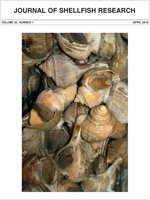The wavy turban snail Megastraea undosa and keyhole limpet Megathura crenulata, two gastropods with commercial importance, five macroalgae, and one seagrass were collected at Bahía Tortugas, Baja California Sur, Mexico, for analysis of stable isotope ratios. The δ13C and δ15N isotope signatures obtained from gastropod muscle tissue were different between the two gastropods. Isotope signatures of M. crenulata had more enriched δ13C (-14.35‰ ± 1.66‰) and δ15N (15.48‰ ± 0.67‰) than M. undosa isotope signatures for δ13C (-17.59‰ ± 2.43‰) and δ15N (12.42‰ ± 0.61‰). Seaweed isotope signals varied from -21.8‰ to -11.4‰ for δ13C and 9.3‰ to 10.9‰ for δ15N. The δ13C of detritus was -7.93 and of tunicates was -9.3‰ and the δ15N of detritus was 12.4 and of tunicates was 8.1‰. Mixing models showed that the greatest contribution to the diet of M. undosa was from Prionitis cornea and Gelidium robustum. For M. crenulata, it was from detritus and Macrocystis pyrifera. A higher trophic position (3.1) was observed for M. crenulata than M. undosa (2.3), which clearly reflected the differences in their feeding habits: M. undosa is a herbivore and M. crenulata is an omnivore.
How to translate text using browser tools
1 April 2016
Trophic Relationships between Two Gastropods and Seaweeds in Subtropical Rocky Reefs Based on Stable Isotope Analyses
Alejandra Piñón-Gimate,
Mercedes M. Gómez-Valdez,
Alejandra Mazariegos-Villarreal,
Elisa Serviere-Zaragoza
ACCESS THE FULL ARTICLE

Journal of Shellfish Research
Vol. 35 • No. 1
April 2016
Vol. 35 • No. 1
April 2016
gastropods
macroalgae
Megastraea undosa
Megathura crenulata
natural diet
stable isotopes




